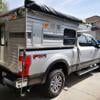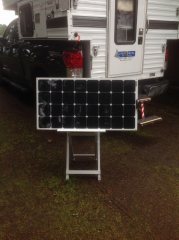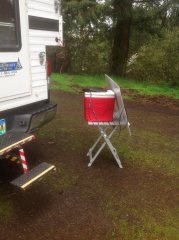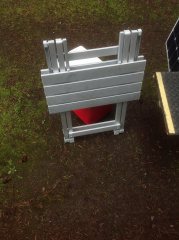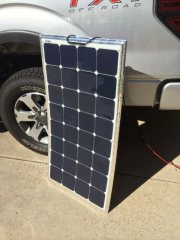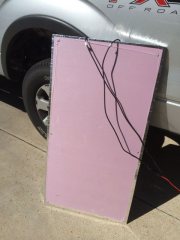It looks like the Morningstar SS-MPPT-15L can accept more than 200 watts, but cuts off the usable power at the 200 watt level. According to their documents, an array larger than 200 watts connected to the SS-MPPT-15L is actually the better way to go, but there is a cost-benefit in play there too.
http://www.morningst...logy-Primer.pdf
Nominal Maximum Input Power*
12 Volt 200 Watts
24 Volt 400 Watts
* These power levels refer to the maximum wattage the SS-MPPT-15L can process at a certain system voltage. Higher power arrays can be used without damaging the controller, but array cost-benefit will be reduced at power levels much beyond the nominal ratings.
Morningstar’s TriStar MPPT™ & SunSaver MPPT controllers are the only controllers that will always limit the output current regardless of input power levels. Morningstar’s patented TrakStar Technology is capable of limiting the output current, while other manufacturers’ MPPT controllers will operate above their maximum current ratings at higher power levels. Morningstar’s MPPT controllers can operate with an oversized array that is several times larger than the maximum Nominal Solar PV ratings, while still limiting the maximum battery current to the controller’s maximum current rating. Many other MPPT controllers on the market cannot react quickly enough for fast changes in solar conditions. Even at the published maximum power levels, these controllers are known to exceed their maximum output current ratings and can trip the overcurrent protection fault shutting off the controller during high power condition
Q2. Can I exceed the nominal wattage ratings of MPPT controllers? Will it void the warranty? You can size Morningstar’s MPPT controllers well above the Maximum Nominal Solar PV Input rating without damaging the controller and without the charging current exceeding the maximum output current rating. The controller can limit output current and will run at 100% of rated current output and not higher. The controller was designed with this power-shaving capability and when oversized it does not void the warranty.
Q5. Can I use a 240 Watt (60 Cell / Vmp≅ 30V) PV module with a SunSaver MPPT™ controller? Yes. Even though the SunSaver MPPT™ controller in a 12V system is nominally rated for a 200W PV array, you can use a larger PV module e.g. a 240W PV module. For 12V systems the SunSaver MPPT controller is an acceptable option due to its ability to convert the module voltage down and charge a 12V battery very effectively. (Fact: all Morningstar MPPT controllers are buck converters—they can convert voltage down but not up, which is known as a boost converter. For this reason, the Vmp of the module must be above the battery voltage at all times or charging will cease).
This graph illustrates the output power levels of a SunSaver MPPT controller—comparing a 200W module to a 240W module—operating on a clear & sunny day at STC maximum power (Pmp). Though the power being delivered to the battery is limited to 200W and the red area at the top of the production curve is lost, the larger module is harvesting more energy, as shown in green. The larger module will provide better production with no power-shaving early and late in the day as compared to a smaller module. In this case almost twice as much energy is gained (green area) than lost (red area) with 12.5% more energy available to charge the batteries than the 200W module.
On cloudy (or intermittent sunny) days there will be little or no power-shaving and the extra power will serve the battery well with more energy harvest. This graph uses real array data and is scaled to a 200W module and a 240W module. On this day there is < 1% loss due to power-shaving (energy above the red line), so more than 95% of the excess power over 200W can be utilized for charging. On clear days this loss of power is likely not to be missed so much. One exception to note is where the power-shaving energy loss could be more of a factor—in colder climates with winter tilt. o In these conditions (shorter days, colder temperatures and okay ≈90° incidence angles) the array will operate above STC Max. o Power Levels and the loss of power could have a bigger impact during the time of the year when it is most needed. Also, to avoid unnecessary stress on the controller’s electronic components, it is recommended that when the controller is installed in a sustained warm temperature climate, the controller not operate at full power, close to its maximum ambient temperature, for prolonged periods of time.
Edited by Bwht4x4, 02 April 2015 - 05:16 PM.





